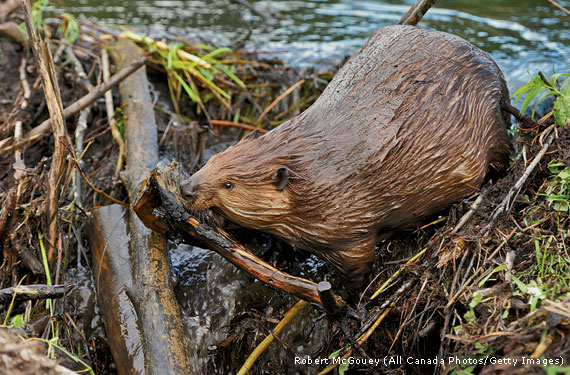Beavers, those industrious creatures of the animal kingdom, are renowned for their exceptional engineering skills and their ability to transform landscapes with their intricate dam-building activities. These fascinating mammals, known for their flat tails, sharp teeth, and water-loving nature, have captivated the attention of nature enthusiasts and scientists alike.
Beavers, scientifically known as Castor canadensis, are the largest rodents in North America. They inhabit various aquatic habitats, including rivers, streams, and ponds, where they create their own aquatic haven by constructing dams. But what drives these furry architects to build such elaborate structures?
One of the primary reasons for beavers to build dams is to create a safe and stable habitat. By constructing dams across rivers and streams, they create a reservoir of water, forming a pond or wetland area. This provides them with easy access to food sources and protection from predators. Additionally, the flooded area also helps in the transportation of logs, which beavers use as building materials for their lodges and dams.
The construction of a beaver dam is a true testament to their meticulousness and engineering prowess. These structures are created by felling trees and strategically placing them across the water body. The beavers then reinforce the dam with mud, rocks, and vegetation, creating a solid structure that can withstand water pressure and ensure stability.
The fascinating aspect of beaver dam-building lies in their ability to alter the environment to suit their needs. By creating ponds and wetlands, beavers contribute to ecosystem diversity and ecological balance. These habitats serve as breeding grounds for various aquatic species, including fish, amphibians, and insects, making beaver dams vital for the overall health and biodiversity of the ecosystem.
It's worth mentioning that beaver dams are not simply random constructions. Beavers possess an innate sense of hydrology and hydrodynamics. They carefully select the location of their dam to maximize water flow and create optimal conditions for their habitat. By controlling water levels, they create a balance between aquatic vegetation and open water, ensuring an ideal environment for their survival.
The sheer scale of beaver dams is awe-inspiring. Some dams can stretch for hundreds of feet and reach several feet in height. The resulting ponds formed by these dams can cover large areas and have a profound impact on the surrounding landscape. These structures act as natural water filters, helping to improve water quality by trapping sediments and pollutants, and even mitigating the effects of flooding by regulating water flow.
Beavers are truly master builders, and their dam-building activities have far-reaching effects on the environment. Their industriousness and ecological impact are so significant that beavers are often referred to as "ecosystem engineers." Their actions create a ripple effect, shaping habitats and influencing the dynamics of the entire ecosystem. In addition to their engineering prowess, beavers also exhibit remarkable family dynamics. They live in family groups called colonies, consisting of a breeding pair, their offspring, and sometimes extended family members. The young beavers, called kits, actively participate in dam-building from an early age, learning the techniques and skills required for their future survival.
It is no wonder that beavers have captivated the imagination of people around the world. Their incredible ability to shape landscapes and create complex structures showcases the ingenuity and adaptability of nature's architects.
